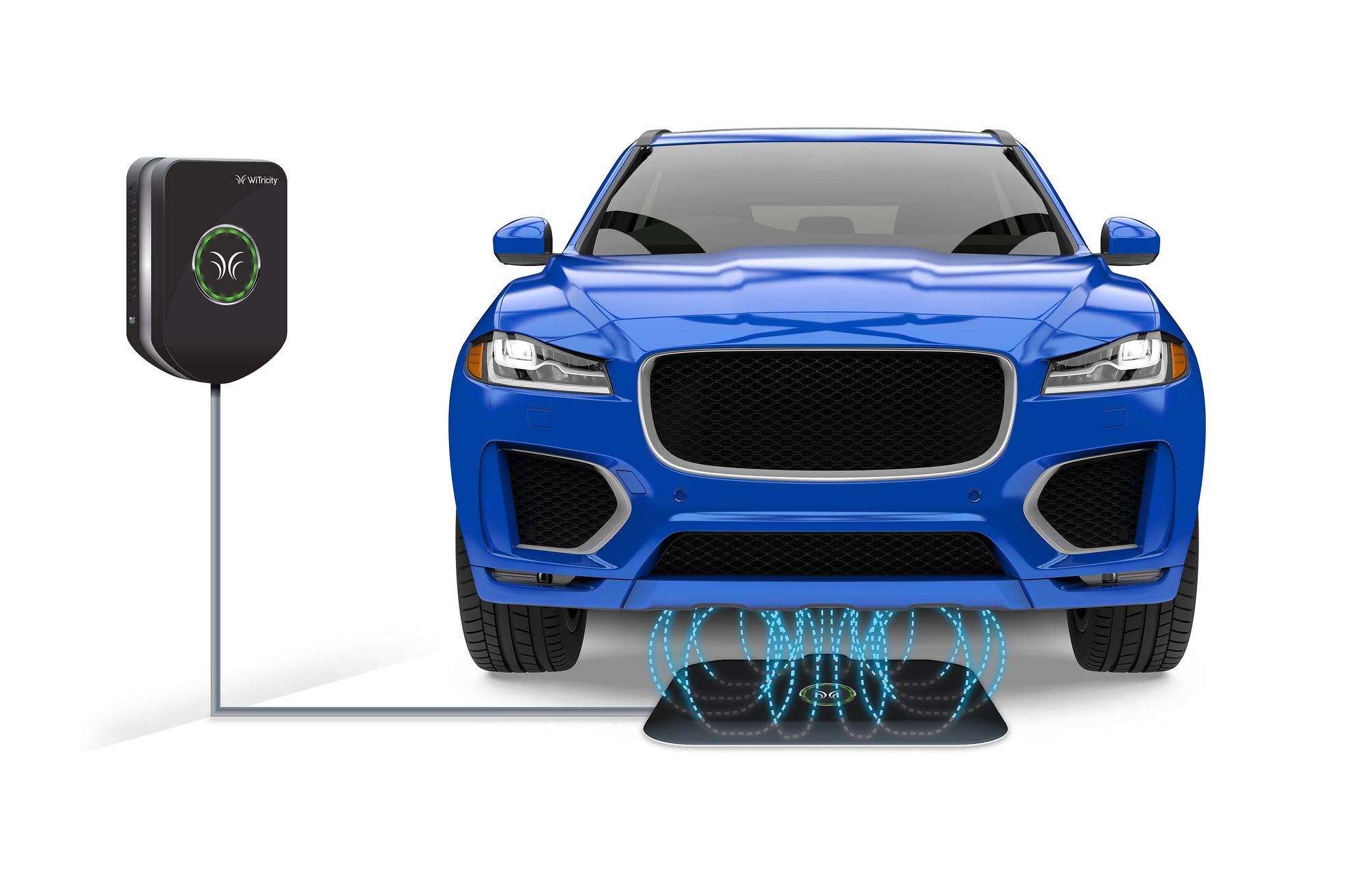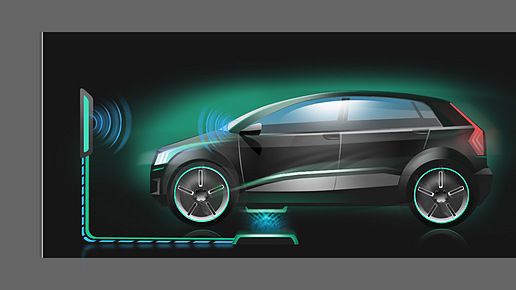Future of electric car chargers
Inductive charging works by creating a magnetic-resonance field between a transmitting pad on the ground (which is physically connected to the grid) and a receiving pad on the underside of the vehicle.


The Society of Automotive Engineers (SAE) announced the first global standard for wireless electric-car charging, accelerating the technology's rollout.
The standard—officially SAE J2954—applies to inductive-charging systems up to 11 kilowatts. As with existing SAE standards for other charging methods, J2954 will harmonize new strategies, allowing for increased interoperability between hardware and vehicles from different manufacturers.
Inductive charging works by creating a magnetic-resonance field between a transmitting pad on the ground and a receiving pad on the vehicle's underside. Wireless signals sent between the car and the charging system initiate and stop charging.
Once you jump on the EV train, you'll wonder why you didn't sooner. You'll reduce your fuel costs exponentially. You'll cater to your customers who are loyal to EV. You'll be seen as an industry leader, paving the way for other companies to make eco-friendly choices.
A future with EV charging stations allows for flexible routes, backup charges, and more options along state routes and highways. You can expect to see high growth in public charging stations for electric cars around the U.S. between 2018 and 2023. But it's also important to arm yourself with knowledge for setting up charge stations onsite.
"Charging your EV should be as simple as parking and walking away—the wireless charging SAE J2954 standard gives freedom to do exactly that, safely and automatically," Jesse Schneider, chair of the SAE J2954 task force, said in a statement.
It's taken a long time to get to this point (the task force began its work in 2007), but that has brought the technology to the point where, with 10-inch ground clearance, systems are achieving 94% grid-to-battery efficiency according to an SAE press release. With additional elements outline in the J2954 standard, wireless charging also fulfills requirements for autonomous cars to charge themselves without human interaction, the SAE said (Wireless EV charging gets a boost: Single standard will .... www.greencarreports.com/news/1130055_wireless-ev-charging-gets-a-boost-single-standard-will-harmonize-systems-up-to-11-kw)

BMW has been offering a trial of the BMW 530e plug-in hybrid with wireless charging at 3.2 kW—but BMW and many other automakers expressed that they will have more interest in the technology when this standard set.
The easiest and cheapest way to charge EVs is to have a reliable system at your place of business. EV drivers who demand their vehicles overnight at home typically use alternate current (AC) plugs, which can take 8 to 12 hours. More powerful direct current (DC) chargers can charge a vehicle in as little as 10 minutes but are only available at specific EV charging points.
Fleet managers need to consider how many stations and what kind they need to add to their site. If daily routes exceed the range of standard EV’s, roughly 200 miles, the fleet manager will then need to identify options for charging. Public charging infrastructure is one option; installing a charging network at a private location is another. Educating the drivers on the protocol to follow if an EV is low on the range and providing access to charging are essential due diligence considerations before electrifying a fleet.
Before setting up chargers on your fleet site, there are a few things to keep in mind:
- Pick a good location for your chargers. The right place for your chargers is wherever you usually park your EVs, so you can regularly and easily access them. Additionally, the upfront cost of installation can be directly affected by your location’s proximity to the power source.
- Ensure your site can handle the amperage. You don’t want to cause a massive power outage once you add EV to your fleet. To be sure your site can handle the amperage, check with your local electricians. The most common amperage for a fleet is 32 Amps, which requires a 40-amp breaker.
- Consider your time restraints. So how long does it take to charge an electric car? It may seem more efficient to charge up at a nearby station in 20 minutes instead of using an 8-hour AC. But keep in mind that the cost to charge an electric car sometimes includes more than money. For example, fast charge stations create a lot of heat and can degrade batteries faster.
- Investigate the costs of charging near you. How much does it cost to set an electric car? Well, free EV charging stations are hard to come by, and public stations cost considerably more money. At peak hours, they can charge up to three times more than at non-peak hours. Research the nearby prices so that you can manage which vehicles are the best fit for overnight charges.
How does a wireless electric car charger work?
Typically, wireless charging, which is also called ‘inductive charging,’ requires three key components.
These include a power source for wireless power transfer (this usually takes the form of a wall box or similar), a ground assembly element like an induction pad, and the corresponding component fitted to the car to allow it to receive the charge.
This equipment can be scaled in size and construction depending on where the charger is, from underneath a taxi rank to inside someone’s private garage.
“In some cases, the charger itself looks like a large pad that cars can drive over on the ground, but some others can sit below layers of concrete,” explains Behyad Jafari, CEO of the Electric Vehicle Council.
(The Future of Charging Stations for Electric Cars. www.mikealbert.com/blog/are-there-enough-ev-charging-stations-to-power-your-fleet)
Source: Green car report, Mike Albert fleet solution, Car advice




